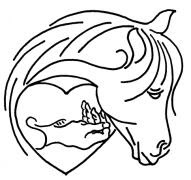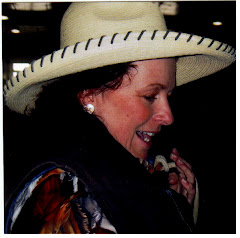
Free Yourself to Experience the Joy of Horses at Liberty!
But be smart about it; preserve the horse’s dignity and your safety.
Since I am writing this on the 4th of July I decided to write about the fine art of dancing with your horse at liberty. It is truly a beautiful sight when done in a way which allows the horse to perform from joy with natural enthusiasm and expressive movement while looking to the person for leadership. A horse at true liberty is free to engage every moment in the process of building meaningful relationships. When a horse is at liberty the handler can shape his character, confidence and curiosity for learning or he can destroy those valuable qualities.
I recently had a person spend over a week with me who has been struggling for a few years to get her horse to perform at liberty with her. It can be very frustrating when your horse keeps leaving you at very high speeds. Then you slap the ground and chase him hoping to disengage his hindquarters to get him to look at you. After doing this enough times it becomes a great game for the horse and an undesirable habit is developed, one which will be very hard to break.
The worst thing you can do to see if you can dance with your horse at liberty is to take off your halter go to the round corral, turn him loose and see what happens. If all you have ever done with a round pen is watch a famous clinician work in one a time or two, chances are neither you nor your horse are prepared to have a successful first experience. The second worst thing you can do is form a habit of chasing the horse rather than drawing the horse to you. It is the draw that you must perfect and that means the release is more important than the pressure, not the other way around.
The general perception of liberty training is a system which applies nearly constant pressure to the horse in a small confined area like a round pen. The person is often quite aggressive, snapping a whip with forced manipulations along the fence line. The horse may come to the person in the middle because his lungs are burning bad enough that he needs relief. It is often a chase game with lots of hard pressure, change of directions and hopefully release of the pressure at the right time to cause the horse to stop look at the person and hopefully move towards the person. And even this can look impressive to some folks. It seems the adult trainer is often very pragmatic in his approach and everything has to be cut and dried. He thinks, “That’s the way we’ve always done it.”
But what if….
· training could be more than simply a person's will forcefully imposed on the horse or a person begging with carrots?
· the horse could have a real voice and truly participate actively in his training?
· there could be a mutually shared partnership between you and the horse, based on a system of communication both could understand equally?
· in the process, the training time was dramatically reduced while results were significantly amplified?
Would you do it? Would you be willing to change your thoughts and actions?
Rather than forcing specific behavior from the horse…
What if….
· We could be more free in our approach, simpler, maybe even childlike with a magical quality.
· We had a proven system based on the actual language horses use to communicate with each other.
· We focused on the horse's language, which is spoken through body movement, eye contact and touch, not sound or verbal cues.
· We fostered a healthy ego in the horse, stimulating his desire to learn, enhanced his natural curiosity and motivated him to excel with meaningful rewards.
· We developed a truly harmonious working relationship based on trust, respect and understanding.
· We encouraged a ballet of shared energies, like dancing, where body language and compatible movement create a strong bond.
· We were so crystal clear so the horse readily comprehends the goals we hope to achieve, plus we give the horse the freedom to work with us as a team player.
· We allowed the horse to be trusted as a willing participant in the dance.
All of this is definitely possible with liberty training. But liberty training is much more than just turning a horse loose in a large enclosed area, free to move about at will, regulated without use of any tack, ropes, halters, or other restraints. It is about speaking a language the horses recognizes and can understand. Even though there is complete freedom of wills there must also be an instant cooperation, precipitated by immense gratitude, and coupled with security felt upon joining up. We must never forget there is high demand for responsibility, sacrifice, appreciation, and commitment from the human in this act of independence which will ensure success at liberty. It is much like the independence we can experience in our personal lives and our great country (America), but in order to maintain it there is a price for liberty.













No comments:
Post a Comment